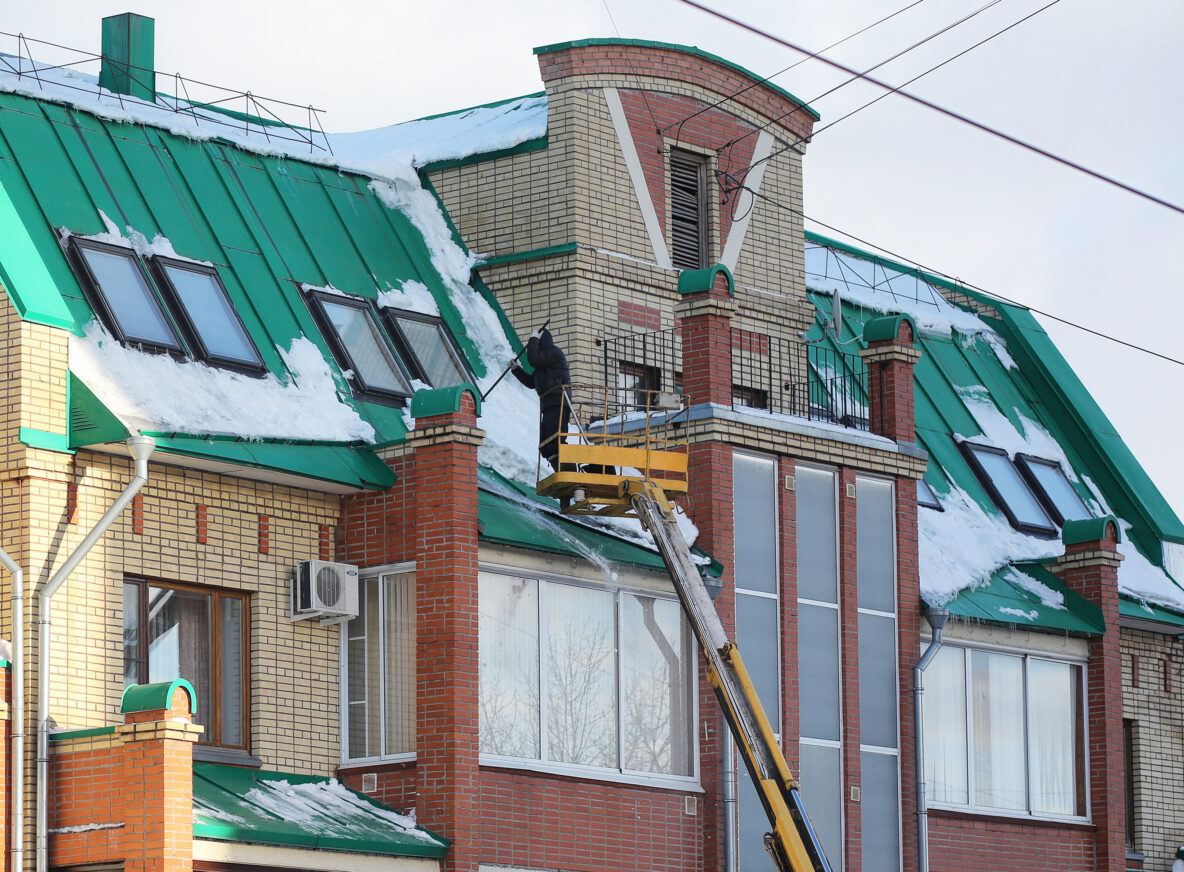The snow, ice, and freezing temperatures of winter can be hard on your building and its roof. Among the hazards winter brings, ice dams have the potential to not only damage your roof and your building, but also to create safety risks for the people who use your building, opening you up to liabilities.
Here’s what every business owner should know about ice dams, including the conditions that cause them, the risks they pose, and how to prevent ice dams from forming on your roof.
What Are Ice Dams?
Ice dams are accumulations of ice that form on the edges of your building’s roof or around roof drains. These ice formations occur when the higher or inner areas of your roof are warmer than its edges. As snow and ice melt, the resulting water runs to the edges of your roof. If the edges are cold enough, the water will refreeze and ice dams will form.
As the snow and ice on your roof continue to melt, ice dams prevent the runoff from draining properly. It accumulates until it overflows, leaking through your roof and damaging your building and its contents.
What Risks Do Ice Dams Pose?
When your roof doesn’t drain properly, snow, ice, and water become trapped, weighing your roof down and causing damage. Accumulated ice can damage shingles, gutters, and the underlying structure of your roof if allowed to grow heavy enough. If enough weight accumulates, it could even put your roof at risk for collapse!
Pooled water can also result in leaks. Leaking water can damage your roof and the structure of your building, as well as its contents. It can soak insulation, rendering it useless. It can also damage walls, flooring, and furnishings and destroy vital documents and important equipment.
In addition, moisture from ice dams can accumulate on surrounding sidewalks, creating a slipping hazard as well as the potential for icicles to fall and hit passersby.
What Causes Ice Dams?
Ice dams are not as likely to happen in early winter when temperatures are warmer and snowfall amounts are lower. But the late winter months, with their frigid temperatures and heavier snowfalls, are prime time for ice dam formation. Ice dams form when:
- Your roof is poorly insulated. Insufficient roof insulation is the leading cause of ice dams. Without an adequate barrier, warm air from within your building can escape through the roof and melt the base layer of snow.
- A substantial snowpack accumulates on the roof that, as it melts, allows enough water to collect to form a dam.
- Outside temperatures are below freezing long enough to allow melting snow to refreeze along the edges of the roof.
This combination of poor insulation, heavy snowpack, and freezing temperatures creates the perfect conditions for ice dams to form.
How To Prevent Ice Dams on Your Commercial Building
While you can’t do much to prevent heavy snowfalls and freezing temperatures from happening, there are a few things you can do to prepare your building to withstand these conditions and prevent ice dams from forming.
- Ensure you have the recommended amount of insulation for your roof. Insulation helps minimize heat loss from inside your building to the outside, preventing warm spots from developing on your roof. A roofing contractor can determine if your roof needs more insulation.
- Have snow cleared from the roof after heavy snowfalls. Remove snow buildup before it has the chance to melt and form ice dams. The goal is to have as little snow and ice as possible on your roof, removing the likelihood that melting snow will create ice dams.
- Make sure your roof cover system is sloped correctly for proper drainage. If ice is building up around drains on a flat or low-sloped roof, consult a roof contractor to make sure the roof cover system is adequately sloped to the drains.
- Have a roof preventive maintenance plan in place that includes regular inspections of the roof and its drainage system to ensure proper flow and to look for evidence of long-standing water (such as mold and mildew).
Need Ice Dams Removed? Hoyt Exteriors Can Help
If ice dams have already formed on your building’s roof, it’s not too late to protect your building from the damage they can cause. Removing ice dams will result in better drainage and a reduced risk of water damage to your roof and your building.
But removing ice dams incorrectly can cause damage to your roof, and working on an icy roof can expose you to a host of safety concerns. Because of these risks, ice dam removal is best left to the professionals.
Trust the reputable roofing contractors at Hoyt Exteriors to safely and thoroughly remove ice dams from your roof for you. Contact us today to learn more about our ice dam removal services or to set up an appointment.

